Trench Coat & Nightmare Fuel
How Robert Stack's Unsolved Mysteries Became Gen X's Shared Trauma
If you're a Gen Xer who came of age in the late 80s and 90s, chances are you have a Pavlovian response to that haunting, synthesized theme music of ‘Unsolved Mysteries.’
 Tiktok failed to load.
Tiktok failed to load.Enable 3rd party cookies or use another browser
You know the one…those ominous electronic notes that could transform any suburban living room into a portal of dread. And looming over it all was Robert Stack, the man who somehow made a career out of making an entire generation afraid to go to sleep.
The Unlikely Prophet of Paranoia
Robert Stack was born Charles Langford Modini Stack on January 13, 1919, and died in 2003. Before he became the unofficial spokesperson for things that go bump in the night, Stack was actually a legitimate Hollywood heavyweight. He appeared in over forty feature films and won the 1960 Primetime Emmy Award for Outstanding Performance by an Actor in a Series for his role in The Untouchables. The man had serious acting chops and was even nominated for an Academy Award for Best Supporting Actor for his role in Written on the Wind (1956).
But here's where it gets interesting: Stack wasn’t just some pretty face reading cue cards. He was inducted into the National Skeet Shooting Hall of Fame in 1971, and served as a gunnery officer in the United States Navy for more than three years during World War II. The guy was basically a real-life action hero who somehow ended up becoming the face of America's unsolved nightmares.
Did the trench coat add to the creepy factor of the show?
The Genesis of Our Collective Trauma
Unsolved Mysteries began as a series of seven specials, presented by Raymond Burr, Karl Malden, and Robert Stack, beginning on NBC on January 20, 1987. These specials were each individually hosted by several different actors, with Robert Stack hosting the remaining specials. But it wasn't until October 5, 1988, that it became a full-fledged series hosted by Stack.
The show's creators, John Cosgrove and Terry Dunn Meurer, probably had no idea they were about to unleash an absolute beast of a show that would make paranoia fashionable. What started as a simple concept — let’s tell stories about unsolved crimes and mysteries — became something far more sinister: appointment television for masochists… and young kids that needed a mild horror fix!
The Perfect Storm of Terror
What made Unsolved Mysteries so effective wasn’t just the content, it was also the delivery. Stack’s deep voice and commanding presence transformed him into the Walter Cronkite of the weird. Blessed with a matinee idol’s baritone voice, he could make reading a grocery list sound ominous. When he intoned those fateful words, “Perhaps YOU can help solve a mystery,” he wasn’t just asking for viewer participation. He was issuing a challenge to your psyche.
The show’s formula was diabolical in its simplicity. Take real crimes, unexplained disappearances, and paranormal phenomena, add dramatic reenactments that looked like they were filmed through a horror movie filter, then have Stack narrate it all with the gravitas of a funeral director. The result was television that felt less like entertainment and more like psychological warfare.
The Episodes That Broke Us
Ask any Gen Xer about their most traumatic Unsolved Mysteries experience, and you’ll get a catalog of shared cultural PTSD. Classic episodes like ‘Stockton Arsonist’ (which many of us know as “Look at it burn, Omar!”), about a kid who set fires and video-tapes the carnage… and ‘Tallman House,’ which made you hate bunk beds and look over your shoulders for spirits that loved terrorizing the home owners (gave all of us the heebie-jeebies).
The disappearance of Cindy Anderson was particularly haunting. She had vivid nightmares of being abducted and murdered a year before she actually disappeared in 1981. Because nothing says “good night’s sleep” quite like the implication that your nightmares might be prophetic.
The show's Season 2, Episode 1 recounting of the alleged 1947 UFO crash and coverup in Roswell, New Mexico was many viewers’ first introduction to the idea that the government might be hiding alien encounters. For a generation raised on E.T., this was like finding out Santa Claus was real but also kind of terrifying.
Cultural Importance
The series churned out episodes for nearly four decades, moving from NBC to CBS and eventually finding new life in various iterations. After nine seasons on NBC, the series moved to CBS for its 10th season in November of 1997. Even when ratings started to slip and CBS tried adding Virginia Madsen as a co-host, nothing could replicate the magic, or should I say the terror, of Stack's singular presence.
The show's impact went far beyond television ratings. It created a template for true crime entertainment that we’re still living with today. Every podcast that makes you double-check your locks, every Netflix documentary that keeps you up at night, every YouTube channel that makes you peak over the bed sheets, and every time someone mentions a cold case and you feel that familiar chill… that's Robert Stack's legacy.
The Lasting Impact
For me, what made Unsolved Mysteries so effective wasn’t just that it scared the hell out of us… it was that it made us complicit in our own terror. By asking viewers to call in with tips, the show created the illusion that we were all amateur detectives, that danger was lurking everywhere, and that anyone could disappear without a trace. It turned paranoia into a civic duty.
There are episodes that still make the hairs on the back of your neck stand up decades later, proving that good trauma never goes out of style. The show was not only entertaining, but it rewired our brains to see mystery and danger in everyday life. Every composite sketch looked like someone who might live next door. Every unexplained disappearance reminded us that safety was an illusion. I still check every single door, lock, and back-up locks (yes, I have back-up locks), and windows in the house before going to bed. Sometimes I do it twice for good measure!
Today, as true crime has become a dominant cultural force, we can trace its lineage directly back to Robert Stack standing in that trench coat, asking us if we could help solve a mystery. He probably didn't realize he was creating a generation of people who would grow up to binge-watch serial killer documentaries and listen to murder podcasts while doing the dishes. You know you do.
In the end, Robert Stack didn't just host a television show… he weaponized curiosity against an entire generation. And somehow, we loved every terrifying minute of it. The man turned bedtime into a back and forth struggle with your fears, and for that, we'll never forgive him. Or forget him.
If you enjoyed this post, please take a moment to subscribe for a free or upgraded subscription to support this newsletter — Also, if you love nostalgia, I invite you to check out my book, Nostalgia Nation: The Definitive Chronicle of Growing Up Gen X
Stay rad!
~ John




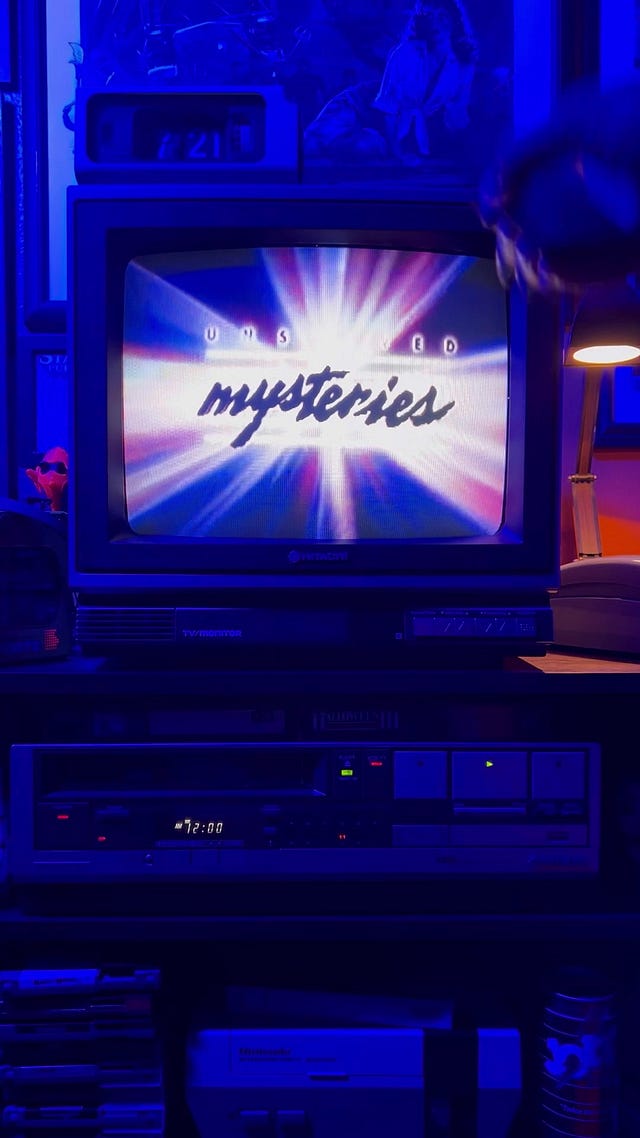

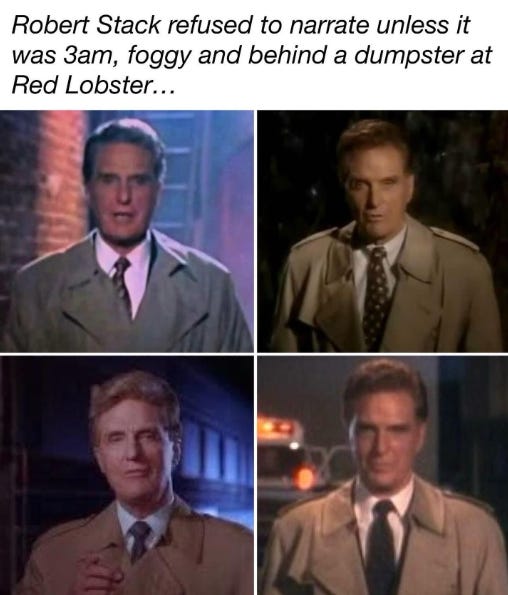
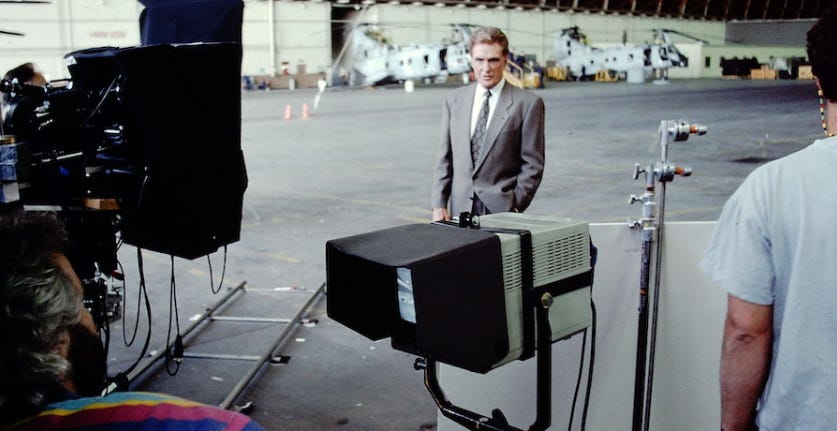
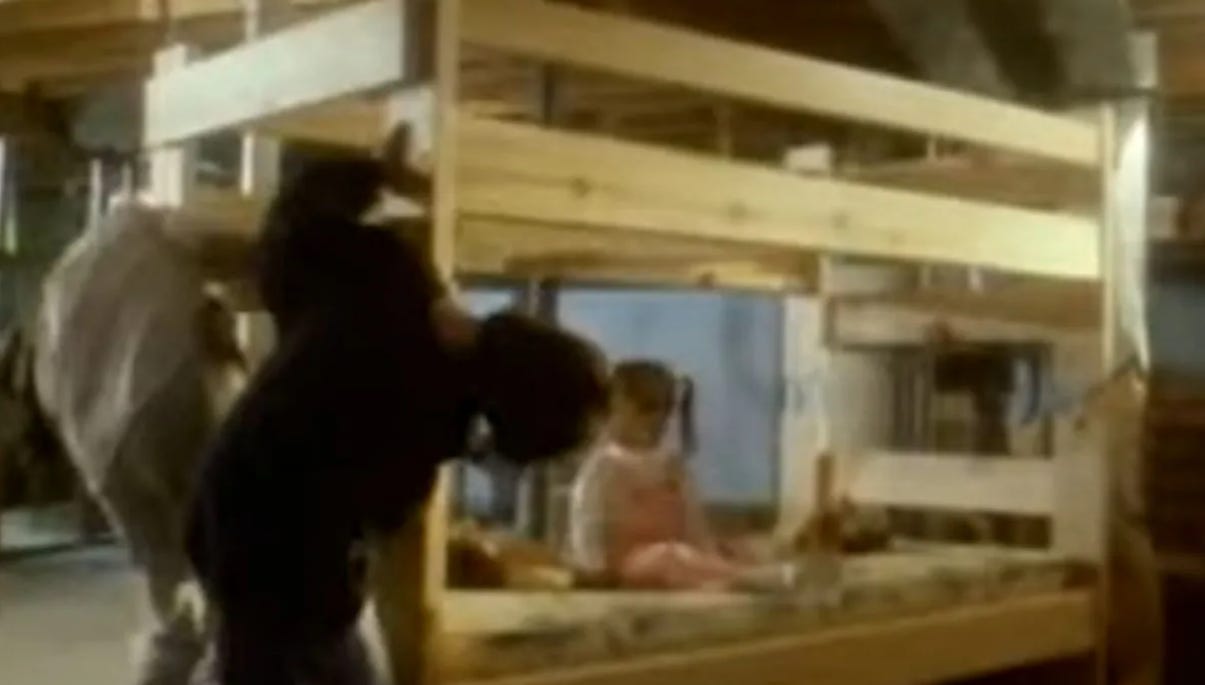


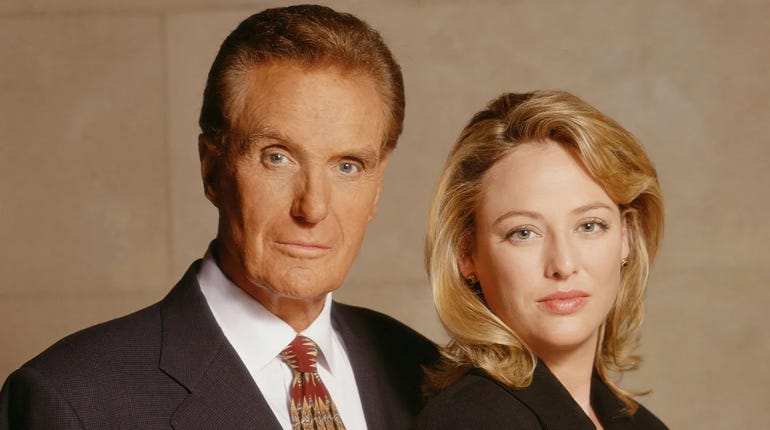
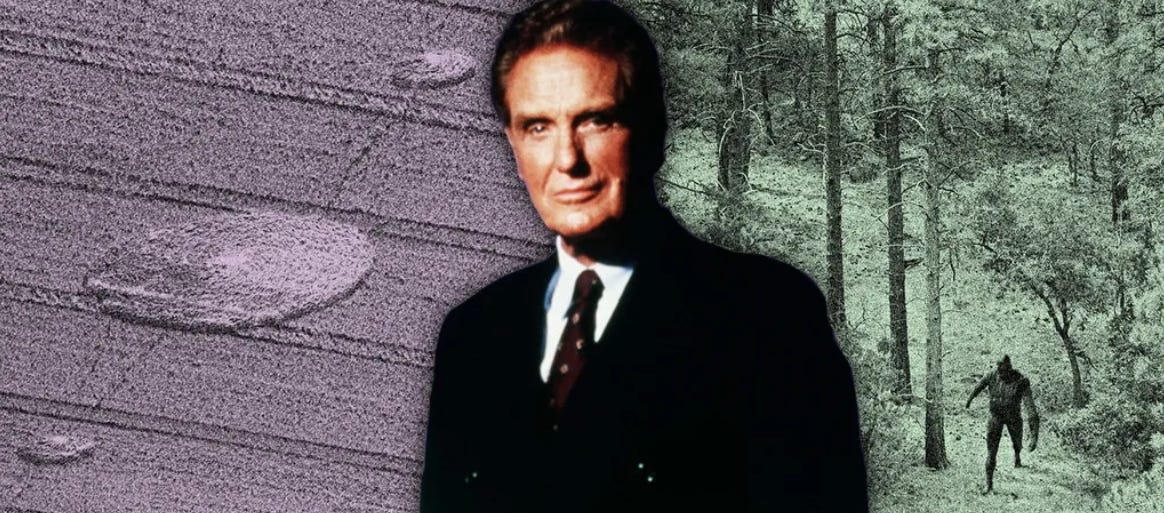


Absolutely loved this! You captured the eerie thrill Unsolved Mysteries delivered so well. Just brilliant.
“He could make reading a grocery list sound ominous” 😆 TRUE
That show’s theme song was so effectively eerie that I couldn’t listen to it if I was home alone. If I had the TV on and the show began, I’d sprint to the remote control to turn the channel or turn it off 😱